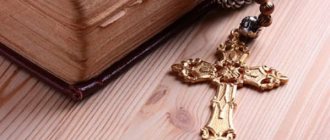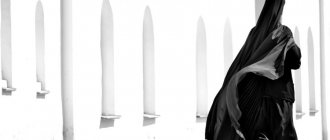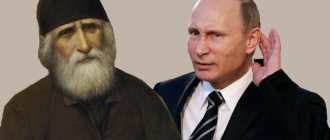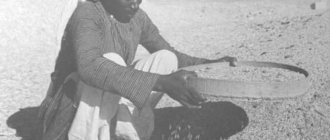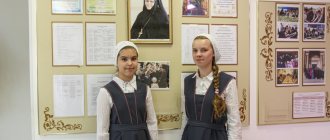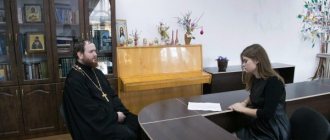Lenta.ru continues to explore the luxurious and sometimes depraved lives of clergy and religious figures. In the previous material we talked about multimillion-dollar fortunes and the illegal business of rabbis, and this time we will talk about how representatives of the Armenian Apostolic Church are glamorous.
The Armenian people are one of the most dispersed people in the world. Despite the fact that the population of Armenia falls slightly short of 3 million people, there are between 10 and 12 million Armenians in the world. And one of the main factors of Armenian identity, uniting representatives of the people around the world, is the Armenian Apostolic Church.
For decades, the Supreme Patriarch and Catholicos of all Armenians was an unquestioned authority for his flock, the person who united people with different citizenships, with different political views, with different social status. However, in 2018, everything changed: a significant part of Armenian citizens demanded the resignation of the head of the church, Karekin II, the patriarch’s car was repeatedly surrounded by protesters, and a fight even broke out in the residence of the Catholicos, the Etchmiadzin Monastery. And one of the reasons for the anger of believers is the luxurious life of the church leadership.
The priests of the Armenian Apostolic Church are often criticized for their nepotism and luxurious lifestyle. In particular, 6 out of 49 bishops come from the village of the Catholicos: he himself as their leader, brother Ezras - the leader of the Russian and New Nakhichevan diocese, His Holiness Arshak - the head of the chancellery, His Holiness Hovakim - the leader of the British and Irish diocese, nephew Mkrtich - the leader of Aragatsotn diocese, His Holiness Mushegh is the caretaker of the Etchmiadzin Monastery.
Photo: Asatur Yesayants / RIA Novosti
Ktrich Nersisyan became the 132nd Supreme Patriarch and Catholicos of all Armenians under the name Garekin II in 1999. He received his theological education in Vienna and Zagorsk, and worked for a long time in Germany.
1/3
In 2011, Catholicos Karekin II was criticized for celebrating his birthday in one of the most expensive restaurants in Yerevan, Florence. The banquet was attended by both the spiritual and secular elite of Armenia, high-ranking officials and large businessmen. In addition, the restaurant belonged to entrepreneur Karen Karapetyan, who shortly before became the mayor of Yerevan.
However, the AAC does not hide the fact that the love of money is not such a sin. Karekin II introduced the course “Basics of Business” into the curriculum of the Theological Seminary of Holy Etchmiadzin and repeatedly stated: “We must be able to make money.” And the Catholicos, apparently, has mastered this art to some extent.
Related materials
00:04 — January 29, 2019
Kosher luxury
Billions of shekels, organ sales and corruption.
The scandalous lives of rabbis in the United States and Israel In 2015, the International Consortium of Investigative Journalists (ICIJ) presented the Swiss Leaks project, within which documents were published containing information about HSBC bank clients from 1988 to 2007. Among these clients in 2006-2007 was the Catholicos of All Armenians, in whose account $1.1 million was discovered.
Not only the Catholicos lives beautifully, but also other representatives of the highest clergy. Thus, in 2011, Archbishop of Ararat Diocese Navasard Kchoyan received a Benltey Continental Flying Spur worth about 200 thousand dollars as a gift from his godson. Kchoyan switched to a British sedan from a Mercedes-Benz S-Class. When asked by a News.am correspondent to comment on the gift, the archbishop replied: “Girl, what is your business? You are invading my privacy."
This is not the first time that Navasard has been at the center of a scandal - in 2007, he received an award weapon from the hands of Prime Minister Serzh Sargsyan. The question of how the status of an archbishop is combined with firearms also remained unanswered.
Photo: Wikimedia Commons
The Catholicos of All Armenians travels in a Mercedes-Benz S600L Guard in the back of a W221, armored at level B6/B7. Such vehicles are protected from mine explosions and fire from a Kalashnikov assault rifle. But the price is appropriate - the cost of a new car is at least 600 thousand dollars.
1/3
As for the automobile preferences of Garegin II himself, for many years he has been using not the latest Mercedes-Benz S-Class for trips around the city and Lexus GX460 for visits to the mountainous parts of Armenia. The AAC leadership’s love for premium cars played a cruel joke on them during the Pope’s visit to Yerevan in 2016.
While Francis moved around Armenia in a white Renault Logan and greeted local residents from open windows, without fear of assassination attempt, Garegin arrived at the meeting in a Mercedes-Benz, accompanied by a motorcade of Toyota Land-Cruiser 200, and the Archbishop of Ararat in his Bentley with Range Rover Sport as escort vehicles.
But not much is known about the residence of the Catholicos. Garegin II, like his predecessors, lives in the Etchmiadzin monastery complex, which is often called the Armenian Vatican. On its territory there is a cathedral, a theological academy, two temples of the 7th century, one temple of the 17th century, a museum with gifts and offerings, as well as the residence of the Catholicos.
Etchmiadzin Catholicosate
Chronology of the reign of the Catholic Patriarchs
- St. Gregory I, Enlightener 302—325
- St. Aristakes I 325—333
- St. Vrtanes I 333—341
- St. Iusik I 341—347
- Paren I 348—352
- St. Nerses I the Great 353—373
- Shaak I 373–377
- Zaven I 377—381
- Aspurakes I 381—386
- St. Sahak I (Partev) 387—436
- St. Hovsep I (Vayotsdzortsi) 437—452
- Melite I 452—456
- Movses I 456—461
- St. Gyut I 461—478
- St. Hovhannes I (Mandakuni) 478—490
- Babken I (Otmesetsi) 490—516
- Samvel I 516–526
- Mouchet I 526–534
- Sahak II 534–539
- Christopher I 539–545
- Ghevond I 545—548
- Nerses II 548—557
- Hovhannes II 557—574
- Movses II 574—604
- Abraham I 607–615
- Komitas I 615—628
- Christopher II 628–630
- Ezr I 630–641
- Nerses III 641–661
- Anastas I 661—667
- Israel I 667–677
- Sahak III 677—703
- Egia I 703—717
- Hovhannes III 717—728
- David I 728–741
- Trdat I 741–764
- Trdat II 764–767
- Zion I 767–775
- Esai I 775–788
- Stepanos I 788–790
- Ovab I 790–791
- Soghomon I 791–792
- Gevork I 792—795
- Hovsep II Scorpio 795—806
- David II 806–833
- Hovhannes IV 833-855
- Zakaria I 855–876
- Gevork II 877—897
- Mashtots I 897-898
- Hovhannes V (Drashanakertsi) 898—929
- Stepanos II (Rishtuni) 929—930
- Theodoros I (Rishtuni) 930–941
- Yeghishe I (Rishtuni) 941–946
- Ananias I 946–968
- Vahan I 968–969
- Stepanos III 969—972
- Khachik I 973—992
- Sarkis I 992—1019
- Petros I Getadar 1019–1058
- Khachik II 1058—1065
- Gregory II (Palavuni) 1066-1105 also known as Gregory II Vkayasser[1]
- Barseg I 1105–1113
- Grigor III Pahlavuni 1113–1166
- St. Nerses IV (Shnorali) 1166-1173
- Gregory IV Tha 1173—1193
- Grigor V (Karavezha) 1193-1194
- Gregory VI (Apirate) 1194–1203
- Hovhannes VI (Mechabaro) 1203—1221
- Constantine I 1221—1267
- Hakob I (Gimnakan) 1268—1286
- Constantine II (Pronagorts) 1286—1289
- Stepanos IV 1290—1293
- Gregory VII 1293–1307
- Constantine III 1307—1322
- Constantine IV 1323—1326
- Hakob II 1327–1341, 1355–1359
- Mkhitar I 1341–1355
- Mesrop I 1359—1372
- Constantine V 1372–1374
- Poghos I 1374—1382
- Theodoros II 1382–1392
- Karapet I 1393—1404
- Hakob III 1404—1411
- Gregory VIII (Handsgat) 1411–1418
- Poghos II 1418—1430
- Constantine VI (Vagatsi) 1430—1439
- Grigor IX (Musabeghiyan) 1439–1441
- Kirakos I 1441–1443
- Grigor X 1443—1465
- Aristakes II (Arotakal) 1465—1469
- Sarkis II (Ajatar) 1469—1474
- Hovhannes VII 1474-1484
- Sarkis III (Musail) 1484—1515
- Zakaria II 1515—1520
- Sarkis IV 1520—1536
- Gregory XI 1536—1545
- Stepanos V 1545—1567
- Michael I 1567—1576
- Gregory XII 1576—1590
- David IV 1590—1629
- Movses III 1629-1632
- Pilipos I 1633—1655
- Hakob IV 1655—1680
- Egiazar I 1681—1691
- Nahapet I 1691-1705
- Alexander I 1706—1714
- Astvatsatur I 1715—1725
- Karapet II 1726—1729
- Abraham II 1730–1734
- Abraham III 1734—1737
- Lazar I 1737—1751
- Minas I 1751-1753
- Alexander II (Caracasian) 1753—1755
- Sahak V 1755
- Hakob V 1759—1763
- Simeon I 1763—1780
- Gukas I 1780—1799
- Hovsep (Joseph) (Prince Argutinsky-Dolgoruky - Arlutyan-Erkaynabazuk) 1800-1801
- Davit V (Korganyan) 1801-1807
- Daniel I 1807–1808
- Emprem I 1809—1830
- Hovhannes VIII 1831-1842
- Nerses V 1842—1857
- Matteos I (Chouhadjian) 1858—1865
- Gevork IV (Kerestedjian) 1866—1882
- Makar I (Ter-Petrosyan) 1885—1891
- Mkrtich I Khrimyan 1892-1907
- Matteos II (Izmirlian) 1908-1910
- Gevork V (Surenyan) 1911—1930
- Khoren I (Muradbegyan) 1932—1938
- Gevork VI 1945—1954
- Vazgen I 1955—1994
- Garegin I 1995—1999
- Garegin II 1999.
Catholicoses of Dvina (373-395).
- 1. Iusik (373-387).
- 2. Zaven (387-390).
- 3. Sahak (c. 390-392).
- 4. Aspurak (c. 392-395).
Catholicos of Agvank (Gandzasar Catholicosate) (c. 551-1828).
- Abas 551—595
- Viro 595—629
- Zechariah I 629–644
- John I 644–671
- Ukhtanes 671—683
- Eliazar 683-689
- Nerses I 689—706
- Simeon I 706–707
- Mikhail 707—744
- Anastasius I 744—748
- Joseph I (Hovsep) 748—765
- David I 765–769
- David II 769–778
- Matthew I 778–779
- Moses I 779–781
- Aaron 781–784
- Solomon I 784
- Theodore 784–788
- Solomon II 788–789
- John II (Hovhannes) 799–824
- Moses II 824
- David III 824–852
- Joseph II 852–877
- Samuel 877–894
- Hovnan 894—902
- Simeon II 902—923
- David IV 923–929
- Isaac (Sahak) 929—947
- Gagik 947—958
- David V 958–965
- David VI 965–971
- Peter I 971—987
- Moses III 987–993
- Mark, Joseph III, Mark, Stephen I (from 993 to 1079)
- John III 1079–1121
- Stephen II 1129–1131
- Gregory I ca.1139
- Bezhgen ca.1140
- Nerses II 1149–1155
- Stephen III 1155–1195
- John IV 1195–1235
- Nerses III 1235—1262
- Stephen IV 1262–1323
- Sukyan and Peter II c.1323-1331
- Zechariah II c.1331
- David VII (?)
- Karapet 1402—1420
- John V c.1426-1428
- Matthew II c.1434
- Athanas II, Gregory II and John VI 1441-1470
- Azaria (?)
- Thomas c.1471
- Aristakes I (?)
- Stephen V c.1476
- Nerses IV c.1478
- Shmavon I ca.1481
- Arakel 1481—1497
- Matthew III c.1488
- Aristakes II 1515-ca.1516
- Sergius I (Sarkis) c.1554
- Gregory III c.1559-1574
- Peter III 1571
- David VIII c.1573
- Philip (?)
- John VII 1574-1584
- David IX c.1584
- Anastasius II c.1585
- Shmavon II 1586—1611
- Aristakes III Colataxi c.1588
- Melkiset Arashetsi c.1593
- Simeon III c.1616
- Peter IV Khondzaksky 1653—1675
- Simeon IV Khotorashensky 1675—1701
- Jeremiah Hasan-Jalal 1676—1700
- Isaiah Hasan-Jalal 1702—1728
- Nerses V 1706—1736
- Israel 1728—1763
- Nerses VI 1763
- John VIII of Gandzasar 1763—1786
- Simeon V Khotorashenki 1794—1810
- Sergius II (Sargis) of Gandzasar 1810-1828; from 1815 with the title of metropolitan).
Catholicos of Akhtamar (Akhtamar Catholicosate) (c. 1117-1780).
- David (c. 1117-1140).
- Zechariah III (1434-1464).
- Stepanos (c. 1464-1480).
- Grigoris I (1512-1544).
- Grigoris II (c. 1574).
- Martiros (c. 1655).
- Nikogaios (1743-1754).
- Grigoris IV (1754-1761).
- Tovma (1761-1780).
OK. 1780 unification with Etchmiadzin.
Catholicos of Sisa (Cilician Catholicosate) (1442—).
- Karapet Evdokatsi (1446-1477).
- Stepanos Saradzodzi (1475-1488).
- John of Atioch I (1488-1489)
- John Tlkurantsi II (1489-1525)
- John Kilistsi III (Lightning) (1525-1539)
- Simeon I Zeytuntsi (1539-1545)
- Lazar I Zeytuntsi (1545-1547)
- Thoros I Ssetsi (of Sis) (1548-1553)
- Khachatur I Chorik (1553-1558)
- Khachatur II Zeytuntsi (Khachik Ulnetsi, Musician) (1560-1584)
- Azaria I Dzhugaetsi (1584-1601)
- John IV Aintaptsi (1601-1621) Petros I (locum tenens) (1601-1608)
- vacant (1865-1871)
- vacant (1894-1902)
in forced exile
ANTI-LASS period, in Lebanon since 1930
- Sahak II Hapayan (1902-1939) Babken II (co-ruler) (1931-1936)
- vacant (1940-1943).
Related materials
00:03 — January 20, 2019
Allah gave
Pipes, horses and caviar every day.
The beautiful life of the great ruler of Iran The entire territory of Echmiadzin is accessible to visitors with the exception of the palace itself, which is separated from the rest of the complex by a high fence. Construction of the palace was completed in 1962 during a period of easing persecution of churches in the Soviet Union. During the same period, the Catholicos received a GAZ-13 “Chaika” car at his disposal. Little is known about what the interior of the palace looks like now - outsiders are not allowed there. In 2013, reconstruction of the palace began, and it is being carried out by a group of Moscow businessman Samvel Karapetyan.
However, one palace was not enough for Garegin II, and several years ago the AAC received land in Yerevan for the construction of the capital residence of the Catholicos. The cost of construction of the residence is estimated at five million dollars, and the first stone was laid in 2011. In addition to the palace of the Catholicos, the Church of St. Anne should be built on this site. It is noteworthy that the Armenian Apostolic Church did not receive an empty plot of land - for the sake of the residence and the temple, the building of the Institute of Language of the National Academy of Sciences of Armenia was demolished. This fact caused violent protests from Yerevan residents.
According to the canons accepted in the Armenian Apostolic Church, monks do not have the right to marry, and priests do not have the right to remarry. However, at the height of the church crisis in Armenia, several women immediately declared that they were ex-wives of priests, and one even signed up as the ex-wife of Catholicos Karekin II himself. Rumors that the head of the AAC has a wife and several adult daughters have been circulating for a long time. In 2012, a number of priests even tried to initiate impeachment proceedings against the Catholicos due to his violation of his vow of celibacy.
Photo: Shutterstock
The Palace of the Catholicos in Etchmiadzin, a monastic complex often called the Armenian Vatican. It is located in the city of Vagharshapat, whose leadership is often accused in the Armenian media of merging with the church elite.
1/5
In 2015, a priest close to the Catholicos told the Hraparak newspaper that one of Garegin II’s daughters is Khatun Ktrichevna Grigoryan, the owner of the Curatio pharmacy on Saryan Street in Yerevan. She was born on December 6, 1981 and was named after her grandmother, the primate's mother. Garegin II's mother was indeed called Khatun, and his worldly name was Ktrich. Journalists visited the pharmacy, but Ms. Grigoryan was not found on the spot.
In addition to inappropriate wives, representatives of the AAC are also accused of having sexual relations with male representatives, including minors. Thus, the Armenian publication Shame has compiled a list of high-ranking clergy suspected of same-sex love, which is prohibited by the canons of the church. The list includes 20 names, including the abbots of the largest churches, the director of the museums of Etchmiadzin, the abbot of the monastery in Bethlehem and the heads of a number of dioceses: Russian, Brazilian, Greek, Ukrainian, French, as well as the former spiritual shepherd of Myanmar, Singapore and Bangladesh.
Excerpt characterizing the List of Catholicoses of the Armenian Apostolic Church
“But, they said, Mamonov’s Cossacks set Mamonov’s Cossacks on fire.” - They! No, this is not Mytishchi, this is further away. - Look, it’s definitely in Moscow. Two of the people got off the porch, went behind the carriage and sat down on the step. - This is left! Of course, Mytishchi is over there, and this is in a completely different direction. Several people joined the first. “Look, it’s burning,” said one, “this, gentlemen, is a fire in Moscow: either in Sushchevskaya or in Rogozhskaya.” No one responded to this remark. And for quite a long time all these people silently looked at the distant flames of a new fire flaring up. The old man, the count's valet (as he was called), Danilo Terentich, approached the crowd and shouted to Mishka. - What haven’t you seen, slut... The Count will ask, but no one is there; go get your dress. “Yes, I was just running for water,” said Mishka. – What do you think, Danilo Terentich, it’s like there’s a glow in Moscow? - said one of the footmen. Danilo Terentich did not answer anything, and for a long time everyone was silent again. The glow spread and swayed further and further. “God have mercy!.. wind and dryness...” the voice said again. - Look how it went. Oh my God! You can already see the jackdaws. Lord, have mercy on us sinners! - They'll probably put it out. -Who should put it out? – the voice of Danila Terentich, who had been silent until now, was heard. His voice was calm and slow. “Moscow is, brothers,” he said, “she is mother squirrel...” His voice broke off, and he suddenly sobbed like an old man. And it was as if everyone was waiting for just this in order to understand the meaning that this visible glow had for them. Sighs, words of prayer and the sobbing of the old count's valet were heard. The valet, returning, reported to the count that Moscow was burning. The Count put on his robe and went out to have a look. Sonya, who had not yet undressed, and Madame Schoss came out with him. Natasha and the Countess remained alone in the room. (Petya was no longer with the family; he went forward with his regiment, marching to Trinity.) The Countess began to cry when she heard the news of the fire in Moscow. Natasha, pale, with fixed eyes, sitting under the icons on the bench (in the very place where she sat when she arrived), did not pay any attention to her father’s words. She listened to the incessant moaning of the adjutant, heard three houses away. - Oh, what a horror! - said Sonya, cold and frightened, returned from the yard. - I think all of Moscow will burn, a terrible glow! Natasha, look now, you can see from the window from here,” she said to her sister, apparently wanting to entertain her with something. But Natasha looked at her, as if not understanding what they were asking her, and again stared at the corner of the stove. Natasha had been in this state of tetanus since this morning, ever since Sonya, to the surprise and annoyance of the Countess, for some unknown reason, found it necessary to announce to Natasha about Prince Andrei’s wound and his presence with them on the train. The Countess became angry with Sonya, as she rarely became angry. Sonya cried and asked for forgiveness and now, as if trying to make amends for her guilt, she never stopped caring for her sister. “Look, Natasha, how terribly it burns,” said Sonya. – What’s burning? – Natasha asked. - Oh, yes, Moscow. And as if in order not to offend Sonya by refusing and to get rid of her, she moved her head to the window, looked so that, obviously, she could not see anything, and again sat down in her previous position. -Have you not seen it? “No, really, I saw it,” she said in a voice pleading for calm. Both the Countess and Sonya understood that Moscow, the fire of Moscow, whatever it was, of course, could not matter to Natasha. The Count again went behind the partition and lay down. The Countess approached Natasha, touched her head with her inverted hand, as she did when her daughter was sick, then touched her forehead with her lips, as if to find out if there was a fever, and kissed her. -You're cold. You're shaking all over. You should go to bed,” she said. - Go to bed? Yes, okay, I'll go to bed. “I’ll go to bed now,” Natasha said. Since Natasha was told this morning that Prince Andrei was seriously wounded and was going with them, only in the first minute she asked a lot about where? How? Is he dangerously injured? and is she allowed to see him? But after she was told that she could not see him, that he was seriously wounded, but that his life was not in danger, she, obviously, did not believe what she was told, but was convinced that no matter how much she said, she would be answer the same thing, stopped asking and talking. All the way, with big eyes, which the countess knew so well and whose expression the countess was so afraid of, Natasha sat motionless in the corner of the carriage and now sat in the same way on the bench on which she sat down. She was thinking about something, something she was deciding or had already decided in her mind now - the countess knew this, but what it was, she did not know, and this frightened and tormented her. - Natasha, undress, my dear, lie down on my bed. (Only the countess alone had a bed made on the bed; m me Schoss and both young ladies had to sleep on the floor on the hay.) “No, mother, I’ll lie down here on the floor,” Natasha said angrily, went to the window and opened it. The adjutant’s groan from the open window was heard more clearly. She stuck her head out into the damp air of the night, and the countess saw how her thin shoulders shook with sobs and beat against the frame. Natasha knew that it was not Prince Andrei who was moaning. She knew that Prince Andrei was lying in the same connection where they were, in another hut across the hallway; but this terrible incessant groan made her sob. The Countess exchanged glances with Sonya. “Lie down, my dear, lie down, my friend,” said the countess, lightly touching Natasha’s shoulder with her hand. - Well, go to bed. “Oh, yes... I’ll go to bed now,” said Natasha, hastily undressing and tearing off the strings of her skirts. Having taken off her dress and put on a jacket, she tucked her legs in, sat down on the bed prepared on the floor and, throwing her short thin braid over her shoulder, began to braid it. Thin, long, familiar fingers quickly, deftly took apart, braided, and tied the braid. Natasha's head turned with a habitual gesture, first in one direction, then in the other, but her eyes, feverishly open, looked straight and motionless. When the night suit was finished, Natasha quietly sank down onto the sheet laid on the hay on the edge of the door. “Natasha, lie down in the middle,” said Sonya. “No, I’m here,” Natasha said. “Go to bed,” she added with annoyance. And she buried her face in the pillow. The Countess, m me Schoss and Sonya hastily undressed and lay down. One lamp remained in the room. But in the yard it was getting brighter from the fire of Malye Mytishchi, two miles away, and the drunken cries of the people were buzzing in the tavern, which Mamon’s Cossacks had smashed, on the crossroads, on the street, and the incessant groan of the adjutant was heard. Natasha listened for a long time to the internal and external sounds coming to her, and did not move. She heard first the prayer and sighs of her mother, the cracking of her bed under her, the familiar whistling snoring of m me Schoss, the quiet breathing of Sonya. Then the Countess called out to Natasha. Natasha did not answer her. “He seems to be sleeping, mom,” Sonya answered quietly. The Countess, after being silent for a while, called out again, but no one answered her. Soon after this, Natasha heard her mother's even breathing. Natasha did not move, despite the fact that her small bare foot, having escaped from under the blanket, was chilly on the bare floor. As if celebrating victory over everyone, a cricket screamed in the crack. The rooster crowed far away, and loved ones responded. The screams died down in the tavern, only the same adjutant's stand could be heard. Natasha stood up. - Sonya? are you sleeping? Mother? – she whispered. No one answered. Natasha slowly and carefully stood up, crossed herself and stepped carefully with her narrow and flexible bare foot onto the dirty, cold floor. The floorboard creaked. She, quickly moving her feet, ran a few steps like a kitten and grabbed the cold door bracket. It seemed to her that something heavy, striking evenly, was knocking on all the walls of the hut: it was her heart, frozen with fear, with horror and love, beating, bursting. She opened the door, crossed the threshold and stepped onto the damp, cold ground of the hallway. The gripping cold refreshed her. She felt the sleeping man with her bare foot, stepped over him and opened the door to the hut where Prince Andrei lay. It was dark in this hut. In the back corner of the bed, on which something was lying, there was a tallow candle on a bench that had burned out like a large mushroom. Natasha, in the morning, when they told her about the wound and the presence of Prince Andrei, decided that she should see him. She did not know what it was for, but she knew that the meeting would be painful, and she was even more convinced that it was necessary. All day she lived only in the hope that at night she would see him. But now, when this moment came, the horror of what she would see came over her. How was he mutilated? What was left of him? Was he like that incessant groan of the adjutant? Yes, he was like that. He was in her imagination the personification of this terrible groan. When she saw an obscure mass in the corner and mistook his raised knees under the blanket for his shoulders, she imagined some kind of terrible body and stopped in horror. But an irresistible force pulled her forward. She carefully took one step, then another, and found herself in the middle of a small, cluttered hut. In the hut, under the icons, another person was lying on the benches (it was Timokhin), and two more people were lying on the floor (these were the doctor and the valet).
Related materials
00:07 — December 23, 2018
The queen has it in her bosom
Palaces, servants and feasts: the luxurious life of priests of the Anglican Church
But if same-sex love is not prosecuted by law in most countries where representatives of the AAC on the list serve, then pedophilia is illegal and is prosecuted. Armenian clergy did not escape accusations of this crime, which is typical for representatives of all religious denominations. Thus, in a number of media (some of which were Azerbaijani) articles appeared in which Garegin II’s brother, Archbishop of Russia and New Nakhichevan Ezras (Mkrtich) Nersisyan, was accused of raping a minor.
It all started when Facebook user Artsruni Avetisyan told on his page the story of an Argentine of Armenian descent named Mikael (Marcello). The boy was orphaned after a car accident in which his parents died, and was sent by the local archbishop Grigoris Buniatyan to the Etchmiadzin Theological Seminary. There he was allegedly subjected to sexual violence by Nersisyan, who at that time was studying at the Gevorkian Theological Seminary.
And Yezras Nersisyan is not the only one accused of pedophilia. In 2015, a criminal case was opened in France - Hrayr Ezekelyan accused Archbishop David Sahakyan of raping him in the Armenian monastery in Jerusalem in the 1990s. A year later, the case was brought to court, but Sahakyan died before its completion.
AAC at the turn of the 20th–21st centuries
The highest body of the AAC is the Church-National. a cathedral of clergy and secular persons. At the Council, the head of the Armenian Apostolic Church is elected, who is the Supreme Patriarch and Catholicos of all Armenians with the throne in Etchmiadzin (since 1999 - Karekin II). In the jurisdiction of the Etchmiadzin Catholicosate there are 8 episcopal sees in Armenia and approx. 20 beyond. In 1966, a single Novonakhichevan and Russian diocese of the AAC was formed with its center in Moscow; in 1997, the dioceses of the South of Russia, with a center in Krasnodar, and Ukraine, with a center in Lvov, were separated from it. To the number of ch. The thrones of the AAC include the Cilician Catholicosate (in Antillas, Lebanon), whose dioceses are located in Lebanon, Syria and some other countries, as well as the Jerusalem and Istanbul Armenian Patriarchates, which do not have dioceses and are under the spiritual guidance of the Supreme Catholicos. The dioceses and parishes of the AAC are scattered across 5 continents of the world and unite approx. 6 million believers. With all 4 ch. Theological educational institutions operate on the thrones of the AAC, and printed publications are published.
